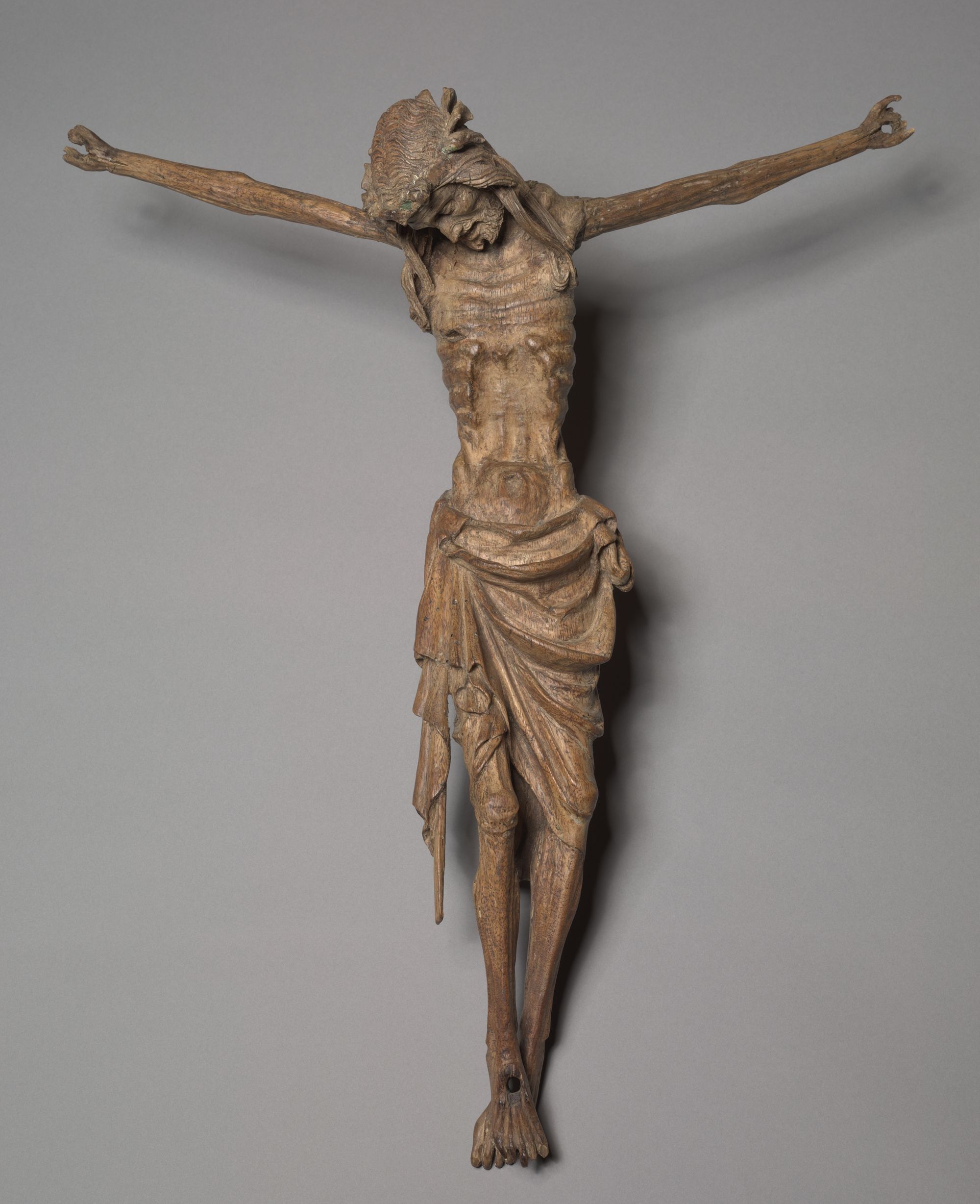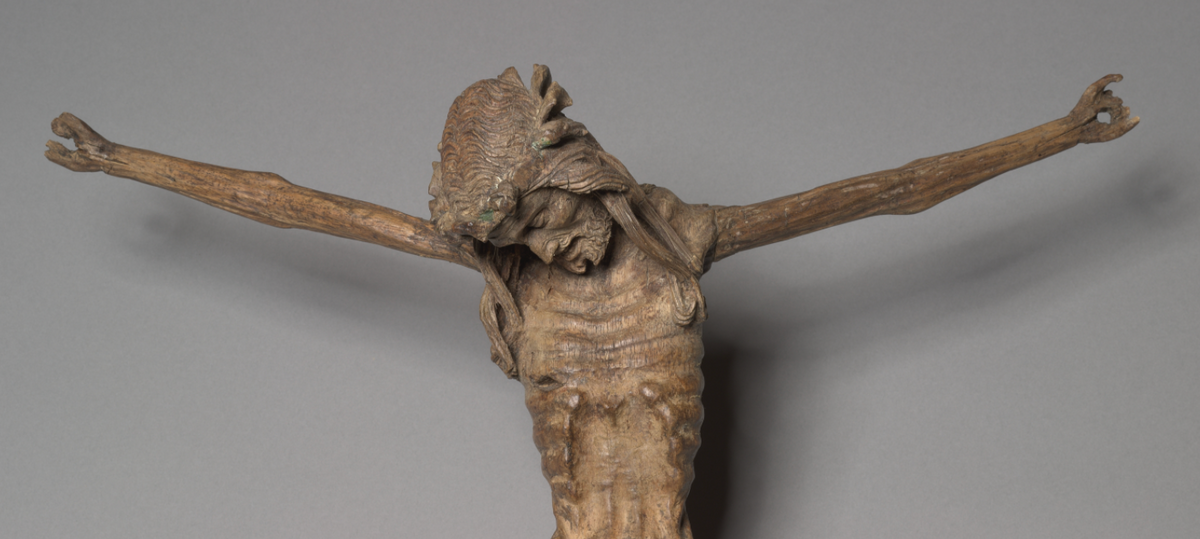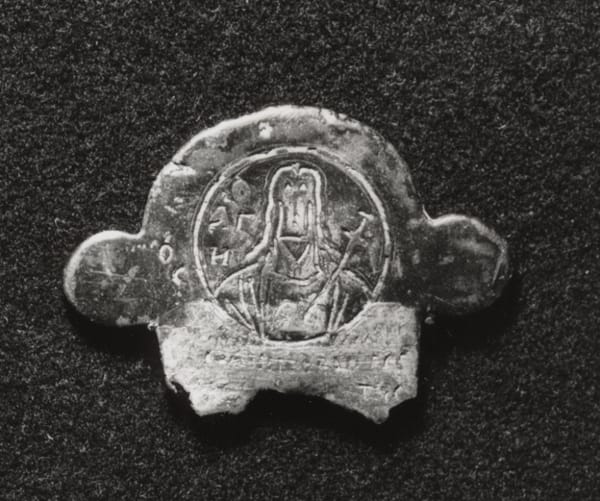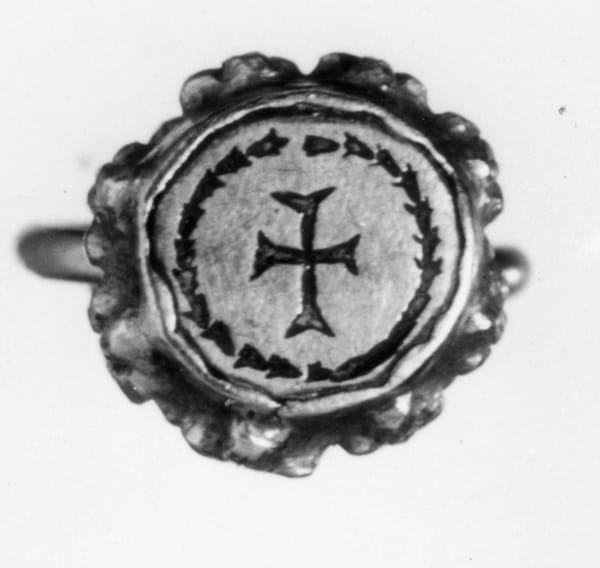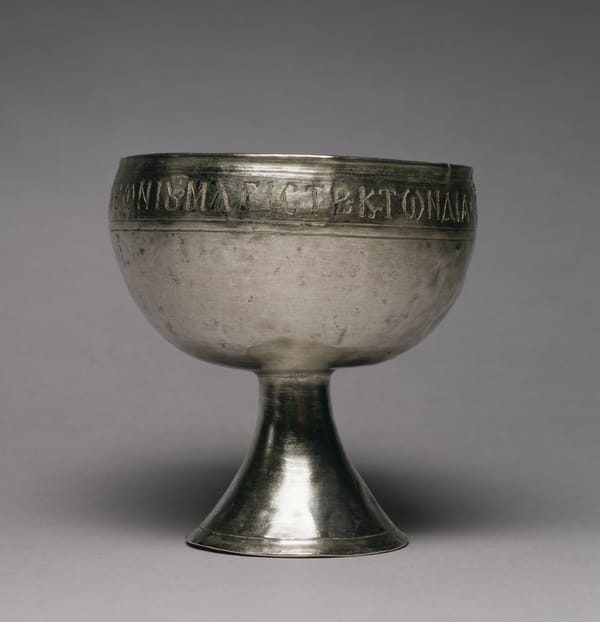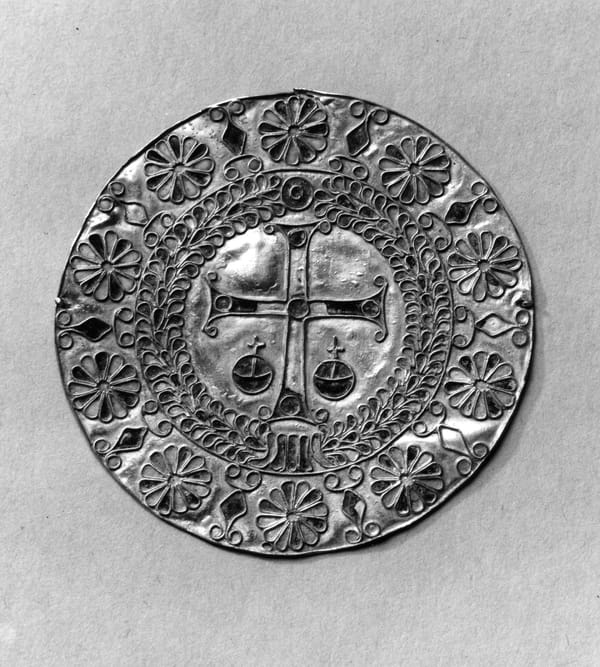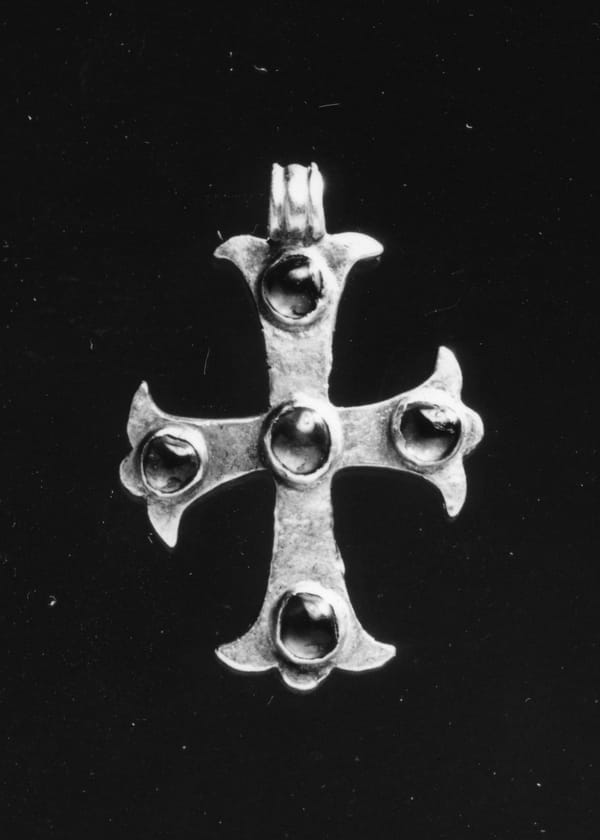The striking impression of this figure is the vivid representation of suffering. The sculpture captures the moment after Christ’s death: the drooping head on a frail neck is a mask of agony. The eyes are nearly shut, the mouth is ajar, and the forehead crowned by heavy, gouging thorns is drawn with pain. The elongation of the body is emphasized by the emaciated chest with protruding ribs and bony limbs. The resulting sense of frailty and pathos is augmented by the heavy strands of hair that uncurl alongside the tormented face and by the loincloth folds that break the downward drape of the body. The sculpture belongs to a group of emotional crucifixes and pietas carved in the Middle-Rhine region for over a century beginning around 1300, examples of which are principally found in the city of Cologne. Such sculptures appealed to the Rhenish mystics, who advocated meditation based on the Passion of Christ.
Free Downloads Below
Hi-Res
1200px
800px
